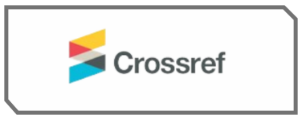Speech Acts of Male and Female Language in the Novel Shaf by Ima Madani
DOI:
https://doi.org/10.63265/jser.v1i2.138Keywords:
speech act, male, female, shaf novelAbstract
This study aims to describe the speech acts of men and women in the novel Shaf by Ima Madani. The research is textual in nature and employs a pragmatic approach, using a descriptive method to analyze the data. The data consist of the novel's text, which contains various types of speech acts: representative, directive, expressive, commissive, and declarative. The primary source of data is the novel itself. Data collection was conducted through purchasing, reading, observing, and marking relevant passages. The analysis involved several steps, including data collection, reduction, display, conclusion, and verification. By applying this approach, the study identifies how men and women use different speech acts in various contexts within the narrative. The findings aim to provide insights into gender-based language patterns, illustrating how characters express, request, promise, or declare through speech. This study contributes to understanding the pragmatic functions of language in literary texts, showing the relationship between linguistic choices and character roles. Overall, the research highlights the diversity of speech acts in Shaf and demonstrates the effectiveness of a textual-pragmatic approach in literary analysis, offering a structured method for examining how dialogue reflects social and interpersonal dynamics in the novel.
References
Dakiroh, I. (2017). Tindak tutur dalam novel Api Tauhid karya Habiburrahman El-Shirazy: Implikasi terhadap pembelajaran bahasa dan sastra Indonesia di tingkat SMP (pp. 41–114). UIN Jakarta.
Gramedia, A. (2022, June 28). Review novel Shaf karya Ima Madani – Best seller Gramedia. Gramedia. https://www.gramedia.com/best-seller/review-novel-shaf-karya-ima-madani/
Juniarti, N. A. (2021). Tindak tutur pada novel Wedding Agreement karya Mia Chuz (pp. 30–87). Universitas Muhammadiyah.
Kaelan, M. (2005). Metode penelitian kualitatif bidang filsafat. Yogyakarta: Paradigma.
Kompasiana. (2011). Sekilas perbedaan pemakaian bahasa pria dan bahasa wanita. Kompasiana. https://www.kompasiana.com/icukprayogi/550af024a33311d01c2e3ba8/sekilas-perbedaan-pemakaian-bahasa-pria-dan-bahasa-wanita
Mahtristhasufi, D. N., et al. (2021). Pragmatik tindak tutur. Malang: Edulitera.
Maxmanroe. (2018). Pengertian bahasa: Sejarah, fungsi, dan manfaat bahasa. Maxmanroe. https://www.maxmanroe.com/vid/umum/pengertian-bahasa.html
Megawati. (2016). Tindak tutur dalam novel Ayat-Ayat Cinta karya Habiburrahman El-Shirazy (pp. 35–54). Universitas Muhammadiyah.
Multazamsyah, & Rahman, A. (2023). Analisis perbedaan psikologi penutur laki-laki dan perempuan dalam kajian sosiolinguistik. Pinisi Journal of Art, Humanity, and Social Studies, 328–331.
Nadar, F. (2013). Pragmatik dan penelitian pragmatik. Yogyakarta: Graha Ilmu.
Pascalisa, Y. L. (2016). Tindak tutur dan wujud pragmatik dalam novel Surat Kecil Untuk Tuhan karya Agnes Danovar (pp. 31–69). USD.
Riadi, M. (2020, July 5). Tindak tutur (pengertian, fungsi, jenis-jenis). Kajian Pustaka. https://www.kajianpustaka.com/2020/07/tindak-tutur.html
Santoso, A. (2011). Bahasa perempuan: Sebuah potret ideologi perjuangan. Jakarta: PT Bumi Aksara.
Satriadi, S., Syahriandi, & Radhiah. (2022). Bentuk dan makna tuturan khotbah Jumat di Masjid Al-Ikhlas Batuphat Timur Kota Lhokseumawe. KANDE: Jurnal Ilmiah Pendidikan Bahasa dan Sastra Indonesia, 116–119.
Wulandari. (2015). Tuturan direktif dalam wacana motivasi Darwis Tere Liye di media sosial Facebook dan kemungkinan efek yang ditimbulkannya. Jurnal Sastra Indonesia, 6–10.
Downloads
Published
How to Cite
Issue
Section
License
Copyright (c) 2023 Journal of Social And Education Research

This work is licensed under a Creative Commons Attribution-NonCommercial 4.0 International License.










